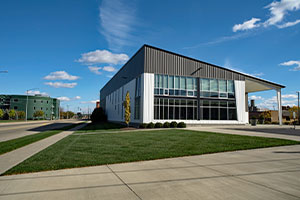Skip To Rehab Listing
Alcohol and Drug Treatment Settings and Modalities in Teaneck
Drug and alcohol dependency affects individuals of all genders, ages and walks of life. The substance abuse treatment centers and resources, such as outpatient day treatment, inpatient drug addiction treatment, long term treatment programs, outpatient detoxification facilities, short term addiction treatment programs, are designed to offer high-quality care to anyone who struggles with substance abuse, no matter their personal circumstance.
Drug and alcohol rehab programs in the Teaneck area are not all the same. They offer a variety of modalities, such as matrix model, dual diagnosis drug rehab, contingency management/motivational incentive, anger management, cognitive/behavior therapy, vocational rehabilitation services, that allow patients to face their alcohol and drug abuse in the way that is most beneficial for them.
Special Programs for Substance Abuse Treatment
Despite the widespread presence of addiction, each individual who struggles with alcohol and drug addiction problems has their own specific circumstances that call for an individualized approach. That is why the rehab centers in Teaneck offer a number of special resources such as seniors or older adults, active duty military, clients with HIV/AIDS, transgender or (LGBT) clients, legal advocacy, programs for the hearing impaired.
Accepted Rehab Payment Types
Clients and their families should not defer treatment because of worries about cost. Treatment programs offer many alternatives for payment, including the following: private health insurance, cash or self-payment, payment assistance, sliding fee scale, other state funds, state welfare or child and family services funds. Addiction treatment facilities can direct clients and their families toward the payment plans that will put treatment within their reach.
Those who struggle with drug and alcohol addiction should not wait to take advantage of the various services accessible in Teaneck, New Jersey.
Commonly Asked Questions about Addiction and Treatment
How to protect children in a substance abusing family?
"Protecting children in a substance-abusing family can be a significant challenge. Here are several steps that can be taken to ensure the safety and well-being of children in such circumstances:
Recognize the Problem: The first step in protecting children is acknowledging the issue. Denying the existence of substance abuse can lead to further harm.
Prioritize Child's Safety: If the substance abuse is causing dangerous situations, the child's safety must come first. This might mean making difficult decisions, such as temporary separation from the substance-abusing family member.
Seek Professional Help: Reach out to professionals who can guide you through this situation. Social workers, psychologists, and addiction specialists can provide valuable assistance and resources.
Encourage and Support Treatment: If the person with the addiction is willing, encourage them to seek professional help. Therapy, rehab, and support groups can all be beneficial.
Educate the Child: Age-appropriate education about drug and alcohol abuse can be helpful. This can help them understand it's not their fault and that the substance abuse is a disease.
Provide a Stable Environment: Create an environment that provides as much stability and routine as possible. This can help the child feel more secure amidst the chaos that substance abuse can bring.
Offer Emotional Support: Make sure the child knows they can express their feelings and fears to you. Validating their feelings and offering comfort is crucial.
Seek Support for the Child: Counseling or support groups specifically for children of substance abusers can provide them with tools to cope.
Report Neglect or Abuse: If the substance abuse leads to neglect or abuse, it must be reported to local child protective services. This can be a painful step, but it's necessary to ensure the child's safety.
Encourage Healthy Coping Mechanisms: Teach the child healthy ways to handle their emotions, such as through art, music, journaling, sports, or talking about their feelings.
Can you send a person to rehab against their will?
The ability to send someone to rehab against their will is highly dependent on the specific laws and regulations of your location. In general, in many jurisdictions, including most states in the U.S., adults cannot be forced into rehab without their consent unless certain legal criteria are met.
However, in some cases where the person poses a danger to themselves or others, a process known as "involuntary commitment" may be possible. This generally involves a court order and typically requires proof that the person is unable to make rational decisions about their health and safety due to their substance use. The specifics of this process, including the standards of proof and the length of time a person can be held, vary widely by jurisdiction.
For minors, parents or guardians typically have the legal right to place their child into a treatment program without the child's consent. Again, the exact laws vary by jurisdiction.
Even if it's legally possible to send someone to rehab against their will, it's important to note that involuntary treatment can be controversial and is not always the most effective approach. Addiction treatment typically requires active participation and a personal commitment to recovery for the best chances of success. Instead, consider engaging a professional interventionist or counselor who can help facilitate a conversation about the person's substance use and the benefits of treatment.
In all cases, it's important to consult with a legal professional in your area to understand the legalities around involuntary treatment. It's also crucial to work with healthcare professionals to ensure that any actions taken are in the best interests of the person struggling with addiction.
What is the purpose of drugs such as methadone, suboxone and subutex in the recovery process?
Methadone, Suboxone (a combination of buprenorphine and naloxone), and Subutex (buprenorphine) are medications used in Medication-Assisted Treatment (MAT) for opioid use disorders. Their primary purpose in the recovery process is to help manage withdrawal symptoms and reduce cravings, facilitating a safer, more comfortable transition to abstinence or long-term management of the disorder. Here's a more detailed look at how each of these medications function:
Methadone: Methadone is a long-acting opioid agonist, which means it activates the same receptors in the brain that other opioids like heroin, morphine, or prescription painkillers do. However, it does so more slowly and for a longer duration, without causing the intense euphoria associated with misuse of those drugs. This helps to mitigate withdrawal symptoms and cravings, enabling individuals to function more normally in daily life.
Suboxone: Suboxone contains two active ingredients: buprenorphine and naloxone. Buprenorphine is a partial opioid agonist, meaning it activates the opioid receptors in the brain, but to a lesser extent than full agonists like heroin or methadone. This can help manage cravings and withdrawal symptoms without producing the high associated with opioid misuse. Naloxone is an opioid antagonist, meaning it blocks the effects of opioids. It's included in Suboxone to discourage misuse of the medication; if someone tries to inject Suboxone, the naloxone will trigger withdrawal symptoms.
Subutex: Subutex is the brand name for buprenorphine alone. Like in Suboxone, buprenorphine in Subutex serves to lessen withdrawal symptoms and reduce cravings. It is typically used in the initial stages of treatment, while Suboxone is more commonly used for maintenance.
These medications are typically used as part of a comprehensive treatment plan that also includes counseling and behavioral therapies. It's important to note that while these medications can be highly effective in supporting recovery, they should be used under the guidance of a healthcare provider due to the risk of misuse and potential side effects. Each individual's treatment plan should be tailored to their unique needs and circumstances to ensure the best possible outcomes.












